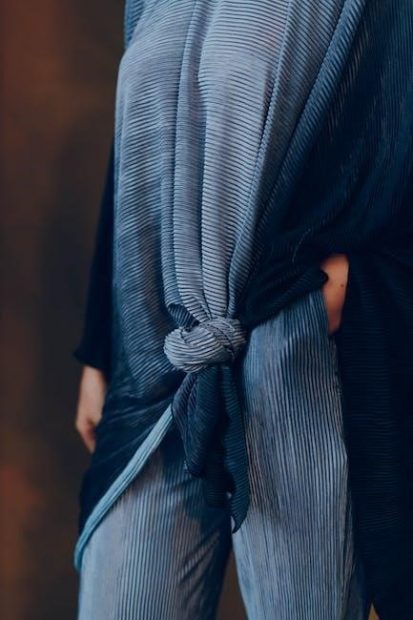Creating your own fabric wallet offers a personalized alternative to store-bought options․DIY wallets can be tailored to individual needs and styles using various fabrics and embellishments․
The Appeal of DIY Fabric Wallets
The appeal lies in crafting a unique, functional item․ Free wallet sewing patterns empower individuals to create personalized accessories․ Instead of breaking the bank for a quality wallet, sew your own! DIY wallets offer a cost-effective, creative outlet․ They are easily customizable with your favorite fabrics and embellishments, making them perfect for gifts or personal use․ Moreover, many patterns are beginner-friendly, allowing you to develop your sewing skills while crafting something practical․
Benefits of Using Free PDF Patterns
Free PDF patterns offer accessibility and convenience for crafters․ Cost savings are a significant advantage, enabling experimentation without financial commitment․ The immediate availability of digital downloads allows for instant project starts․ These patterns often come with step-by-step instructions, making them suitable for various skill levels․ Moreover, a wide variety of styles and designs are available online․ PDF patterns can be easily printed and reused, promoting sustainable crafting practices․
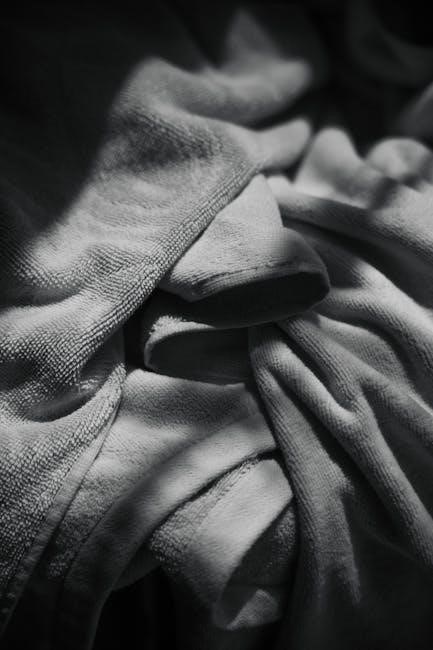
Types of Fabric Wallet Patterns Available
Bifold wallet patterns commonly feature a classic design․ It has slots for cards and a pocket for cash, folding in half for compact storage․
Bifold Wallet Patterns
Bifold wallet patterns are a classic choice for a reason․ Their design typically incorporates an outer shell, intentionally longer than the inner sections․ This ensures a proper fit when folded․ They have card slots and cash pockets․ They offer both functionality and a traditional aesthetic and are easy to carry․ Many free PDF options are available, making this a great starting point․
Coin Purse Wallet Patterns
Coin purse wallet patterns offer a compact and convenient solution for carrying loose change and small essentials․ These patterns are often beginner-friendly, making them ideal for first-time sewing projects․ They are often scrap-friendly and can be crafted from various fabrics․ Many free PDF patterns are available online, often including step-by-step tutorials for easy construction․ They are easy to carry․
Card Holder Wallet Patterns
Card holder wallet patterns are designed for minimalist individuals who prefer to carry only essential cards․ These patterns often feature multiple card slots in a slim, compact design․ Free PDF patterns for card holders are readily available online, ranging from simple designs to more complex constructions․ These wallets can be made from fabric or leather scraps, offering a sustainable and stylish way to organize your cards․
Zipper Wallet Patterns
Zipper wallet patterns offer added security and functionality, ensuring that your cash, cards, and coins stay safely enclosed․ These wallets typically include a zippered compartment, along with card slots and pockets․ Numerous free PDF patterns are available for zipper wallets, ranging in complexity from beginner-friendly to more advanced designs․ They often incorporate fabric or leather and are great gifts․
Finding Free Fabric Wallet Patterns
Numerous websites and blogs offer free fabric wallet patterns․ These platforms often provide downloadable PDFs and tutorials for various wallet styles and skill levels․
Online Pattern Websites and Blogs
Many online resources provide free wallet sewing patterns suitable for various skill levels․ Look for blogs and websites dedicated to sewing and crafting, as they often feature tutorials and downloadable PDF patterns for fabric wallets․ Some sites offer classic bi-fold designs with card slots and cash pockets, while others provide patterns for coin purses and slim wallets․
PDF Download Resources
Several websites offer free PDF downloads for fabric wallet patterns, providing printable templates for immediate use․ These resources often include patterns for bifold wallets, zipper wallets, and card holders, catering to diverse needs and preferences․ Ensure the PDF is optimized for printing and check for included instructions or accompanying tutorials to guide the sewing process․

Materials Needed for Fabric Wallet Construction
Successful fabric wallet construction relies on choosing the right materials․ Consider durability, aesthetics, and ease of sewing when selecting your fabric for your wallet project․
Fabric Selection
Choosing the right fabric is crucial for a durable and stylish wallet․ Consider options like cotton, linen, or even repurposed denim․ Leather provides a classic, long-lasting option․ Select fabrics that are easy to sew and maintain․ The fabric’s weight and texture will affect the final product’s appearance and functionality․ Ultimately, the best fabric complements the wallet design and your personal preferences․
Interfacing and Stabilizers
Interfacing and stabilizers are essential for providing structure and durability to fabric wallets․ They prevent stretching and maintain the wallet’s shape․ Choose interfacing based on the fabric’s weight; lighter fabrics require lightweight interfacing․ Heavyweight interfacing is suitable for thicker materials․ Experiment with fusible or sew-in options to find the best fit․ Stabilizers add extra support to areas like card slots or zipper attachments, ensuring longevity․
Zippers, Snaps, and Other Closures
Selecting the right closures is crucial for wallet functionality and security․ Zippers offer a secure closure, ideal for coin compartments or securing the entire wallet․ Snaps provide a simple, quick closure for card slots or flaps․ Consider magnetic snaps for a sleek, hidden closure option․ Hook and loop fasteners offer adjustability and ease of use․ Choose closures that complement the wallet’s design and provide the desired level of security and convenience․
Essential Sewing Tools
A well-equipped sewing kit is essential for crafting fabric wallets․ Sharp fabric scissors are needed for precise cutting․ A rotary cutter and mat can speed up the cutting process, especially for straight lines․ Use pins or clips to hold fabric layers together․ A seam ripper is handy for correcting mistakes․ A sewing machine with a universal needle is ideal for most fabrics․ Finally, an iron and ironing board are crucial for pressing seams and achieving a professional finish․
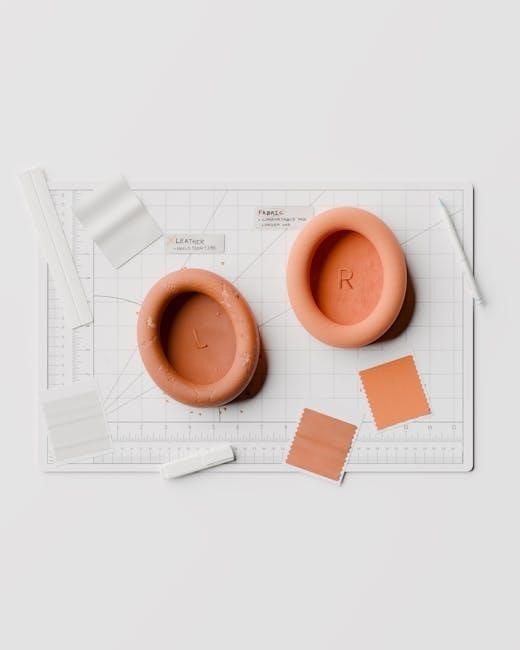
Step-by-Step Guide to Sewing a Basic Fabric Wallet
Begin by downloading and printing your chosen free wallet pattern․ Ensure the pattern prints at the correct size․ Then, carefully cut out all the necessary pattern pieces, preparing them for fabric layout․
Printing and Preparing the Pattern
First, locate and download your desired free fabric wallet pattern, often available as a PDF․ Open the file using Adobe Acrobat or a similar PDF viewer․ Print the pattern, ensuring the scale is accurate․ Most patterns include a test square to verify sizing․ Once printed, carefully cut out each pattern piece along the indicated lines․ Label each piece for easy reference during assembly, noting any grainline markings or specific instructions․ Preparing the pattern meticulously ensures accurate and successful wallet construction․
Cutting the Fabric Pieces
After preparing your pattern, select your chosen fabric․ Lay the fabric flat, and position the pattern pieces according to any indicated grainlines․ Secure the pattern pieces with pins or pattern weights to prevent shifting․ Using sharp scissors or a rotary cutter, carefully cut around each pattern piece․ Ensure accurate cuts for precise assembly․ Transfer any markings from the pattern to the fabric using a fabric marker or tailor’s chalk․ Remember to cut all necessary pieces, including lining, interfacing, and any additional pockets or details specified in the wallet pattern instructions․
Assembling the Wallet Components
Begin by attaching interfacing to the designated fabric pieces, following the manufacturer’s instructions for your chosen interfacing․ Next, assemble the card slots and pockets, stitching them to the lining pieces as indicated in the pattern․ Construct the inner and outer shells of the wallet separately, pressing seams open for a clean finish․ Join the inner and outer shells, leaving an opening for turning․ Turn the wallet right side out and press․ Finally, topstitch around the perimeter to close the opening and reinforce the seams, creating a durable and well-constructed fabric wallet․
Adding Finishing Touches
After assembling the main components, focus on the finer details that elevate your fabric wallet․ Secure any loose threads and trim excess fabric for a polished look․ Consider adding decorative stitching along the edges or seams for visual interest․ Install closures such as snaps, buttons, or Velcro to keep the wallet securely closed․ A personalized label or tag can add a professional touch․ Finally, give your completed wallet a thorough pressing to ensure crisp edges and a refined appearance, making it ready for everyday use or gifting․
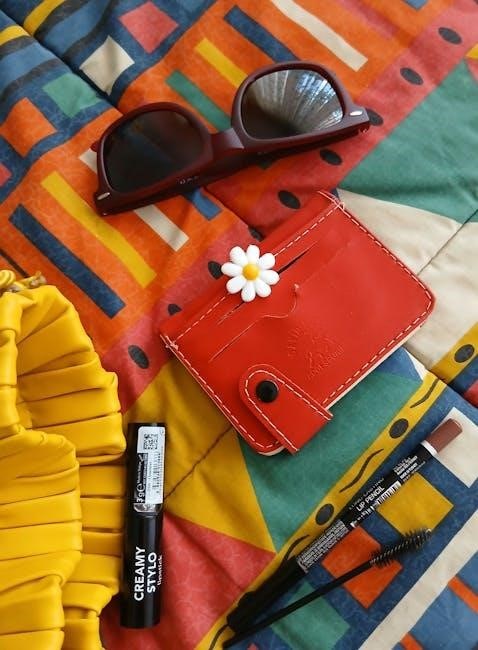
Tips for Customizing Your Fabric Wallet
Personalize your fabric wallet by modifying the pattern size to fit your specific needs․ Enlarge or reduce the dimensions to accommodate more cards, cash, or other items․
Adjusting Pattern Sizes
Adapting pattern sizes opens a realm of possibilities for your DIY fabric wallet․ Whether you desire a compact card holder or a more spacious design, altering the pattern is key․ Consider adding extra length or width to the pattern pieces to accommodate more cards, cash, or even a small coin pouch․ Remember to maintain the proportions for a cohesive design․
Adding Unique Embellishments
Personalizing your fabric wallet with unique embellishments allows you to express your creativity․ Consider adding decorative stitching along the edges or incorporating fabric scraps to create a patchwork effect․ You could also sew on buttons, beads, or charms for a touch of whimsy․ Experiment with different textures and colors to create a one-of-a-kind wallet that reflects your personal style․
Choosing Different Fabric Combinations
Experimenting with diverse fabric combinations is a great way to make unique fabric wallets․ Consider contrasting solid colors with patterned fabrics to create visual interest․ You could also mix different textures, such as cotton with denim or linen, for a tactile experience․ Don’t be afraid to combine unexpected patterns and colors to create a truly personalized and eye-catching wallet․
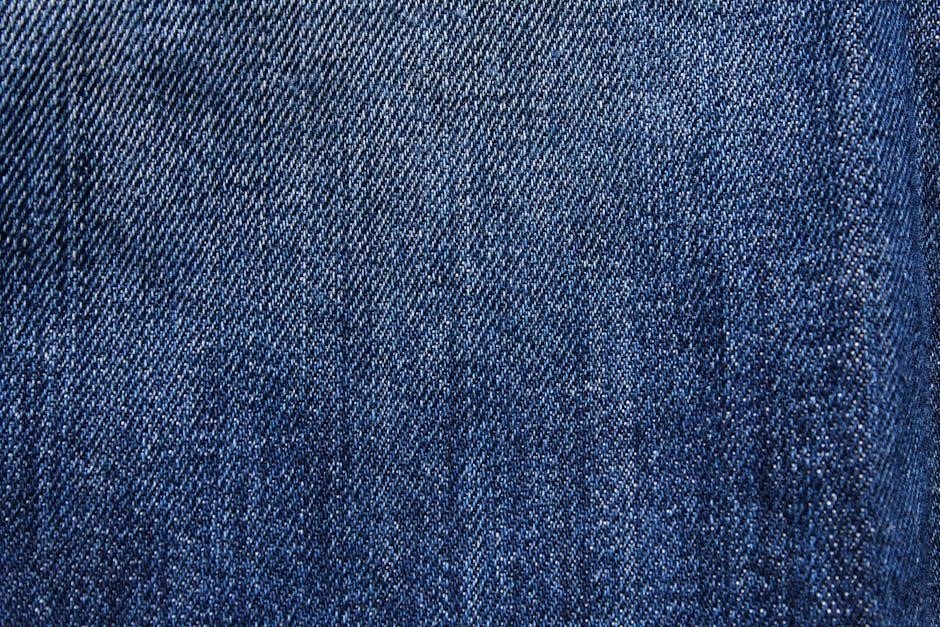
Troubleshooting Common Sewing Issues
Fabric slippage can be frustrating․ Using a walking foot, spray starch, or pins helps to keep fabric layers aligned․ Slowing down your sewing speed will also significantly reduce this problem․
Dealing with Fabric Slippage
When working on a fabric wallet, especially with slippery materials like silk or laminated cotton, fabric slippage is a common issue․ This can lead to mismatched seams and a less-than-professional finish․ To combat this, use a walking foot on your sewing machine, which feeds both layers of fabric evenly․ Pinning meticulously and using spray starch can also help keep the fabric in place․ Slow, steady sewing is key․
Sewing Accurate Seams
Achieving accurate seams is crucial for a well-constructed fabric wallet․ Always use the correct seam allowance indicated in your chosen pattern and use a guide on your sewing machine․ Guide can be masking tape․ Consistent seam allowances ensure the wallet’s components fit together properly․ Take your time and focus on maintaining a steady hand while guiding the fabric along the edge of the presser foot․
Installing Zippers Correctly
Zipper installation can be tricky, but proper technique yields professional results․ Start by basting the zipper in place before sewing it permanently․ This prevents shifting and ensures accurate alignment․ Use a zipper foot to sew close to the zipper teeth․ Go slowly, pivoting at the corners for a smooth finish․ Practice makes perfect, so don’t be discouraged if your first attempt isn’t flawless; review online tutorials for extra help․

Advanced Techniques for Fabric Wallet Making
Elevate your fabric wallet by incorporating leather accents․ Leather adds durability and a touch of sophistication, creating a unique and stylish accessory․
Working with Leather Accents
Adding leather accents to fabric wallets can elevate their design and durability․ Consider using leather for corners, edges, or as a decorative overlay․ Free leather wallet patterns, often available as PDF downloads, can serve as guides for incorporating leather elements․ Ensure you have the appropriate tools, like leather needles and strong thread, for successful integration․ Practice on scraps before applying leather to the final wallet․
Incorporating RFID Blocking Materials
Protect your cards from electronic theft by adding RFID blocking materials to your fabric wallet․ These specialized fabrics or interlinings shield your cards’ data․ When selecting a free fabric wallet pattern PDF, ensure it allows space for incorporating this extra layer․ Carefully cut and insert the RFID blocking material between the wallet’s fabric layers, following the pattern’s instructions․ This adds a layer of security․
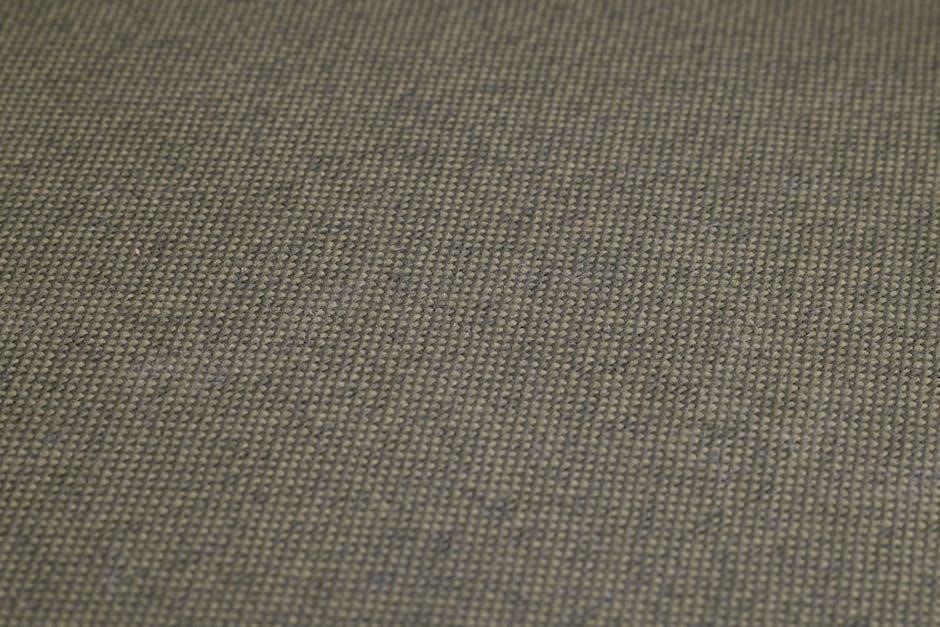
Resources for Learning More
Numerous online sewing tutorials can guide you through various wallet-making techniques․ These resources often include video demonstrations and step-by-step instructions, perfect for visual learners seeking to expand their skills․
Online Sewing Tutorials
Websites like YouTube and blogs dedicated to sewing offer a plethora of free tutorials․ These tutorials often feature clear instructions and visual aids for creating different wallet styles; Look for beginner-friendly videos that cover basic sewing techniques and walk you through each step, building your confidence and skills․ Many offer downloadable PDF patterns to accompany the video, streamlining your project․
Sewing Communities and Forums
Online sewing communities and forums provide valuable resources for fabric wallet makers․ Platforms like Reddit’s r/sewing or dedicated sewing forums are great places to ask questions and share your work․ Experienced sewists can offer tips, troubleshooting advice, and pattern recommendations․ You can also find inspiration from other members’ projects and discover new techniques for customizing your fabric wallets, enhancing your overall crafting experience․

Inspiration and Design Ideas
Explore a wide array of fabric wallet designs online․ Draw inspiration from classic bi-fold wallets or explore more modern, minimalist styles․ Consider different fabric combinations and embellishments to create a truly unique piece․
Showcasing Different Fabric Wallet Designs
Dive into the world of fabric wallet creativity! Discover inspiration from various sources, including online sewing communities and design blogs․ Examine wallets with zipper closures, card slots, and coin pouches․ Explore patterns with leather accents for a touch of sophistication․ Consider color combinations and fabric textures to create a wallet that reflects your unique personal style and needs․
Exploring Creative Uses of Patterns
Unleash your creativity by adapting existing wallet patterns for new purposes․ Transform a card holder pattern into a minimalist travel wallet․ Embellish a simple bifold design with intricate embroidery or fabric scraps․ Consider using patterns to create themed wallets, such as one for travel documents or another for organizing receipts․ The possibilities are endless when you experiment with pattern modifications and embellishments․

The Joy of Creating Your Own Fabric Wallet
Embarking on a fabric wallet project opens up a world of creative expression and practical skill-building․ The satisfaction of crafting a personalized accessory from readily available materials is immense․ Experiment with free PDF patterns, customize designs, and revel in the unique charm of a handmade wallet that reflects your individual style․ Enjoy the process of creating something both useful and beautiful․
